Master many advanced, specialized, and complex techniques
Reporter (PV): Sir, breakthroughs in science - technology, innovation, and digital transformation are considered key driving forces to help the Vietnamese people develop strongly in the era of rising up. The health sector in general and Thanh Hoa health sector in particular are not outside of that common "flow". Could you please tell us what outstanding results Thanh Hoa's health sector has achieved in the past years in developing science, technology, innovation, and digital transformation?
Dr. Le Van Cuong: Thanh Hoa is considered one of the localities with a relatively synchronous, comprehensive, inclusive and specialized health system from the province to the grassroots level. The whole province has 38 public hospitals, 4 provincial health centers, 26 district health centers, 547 commune, ward and town health stations, 20 private hospitals; 100% of villages, hamlets and residential groups have population collaborators, medical staff and village and hamlet midwives to carry out the tasks of taking care of people's health. The whole province has achieved 44 hospital beds/10,000 people, among the highest in the country and exceeding the set target.
To better meet the requirements of protecting and taking care of people's health, Thanh Hoa's health sector pays special attention, devotes many resources, builds many mechanisms and policies to strengthen human resource training, promotes scientific research movement, technology transfer, constantly invests and develops specialized medicine, modern techniques, and applies advanced technology in diagnosis and treatment.
In particular, Thanh Hoa's health sector has established online support groups including medical experts, health managers, and information technology to help support consultation and improve the professional qualifications of medical staff...
Currently, Thanh Hoa's health sector has achieved many remarkable results in developing technical services, mastering many advanced, specialized and complex techniques. Many techniques that were previously only performed at the central level have become routine techniques in Thanh Hoa's health sector. Some hospitals have been equipped with modern medical equipment that integrates artificial intelligence in supporting diagnosis and treatment. It can be affirmed that in recent times, Thanh Hoa's health sector has constantly strived to integrate into the strong "flow" of digital transformation, has made significant progress in developing science, technology, innovation and digital transformation, making important contributions to the work of caring for, protecting and improving people's health.
Accordingly, 100% of hospitals in the province have deployed the hospital management information system; at commune health stations, the HMIS basic health software has been deployed and maintained; data has been successfully and smoothly connected between medical examination and treatment facilities and the Vietnam Social Security agency. 100% of public health units have deployed software to manage documents and work records in the electronic environment, connected to the National Document Interconnection Axis to serve the sending and receiving of electronic documents from the Central to the local level and between units in the province...
Thanh Hoa's health sector has also gradually standardized and digitized private medical practice data, medical and pharmaceutical operations, inspection, and moved towards forming a common database; 100% of eligible administrative procedures have been put into full and partial online public service implementation; actively advised the Provincial People's Committee to issue a plan to pilot the implementation of electronic health books for integration on the VNeID application in the province, proposed to select the task of implementing electronic health books as a breakthrough in digital transformation in 2025; promoted the implementation of electronic medical records...
There is a need for financial solutions, human resource training, public-private partnership and policy synchronization...
PV: The birth of Resolution 57 is considered a strong driving force, the “key” to opening up many development opportunities for the health sector. However, the issue of resources to respond to and implement Resolution 57 synchronously and effectively is one of the biggest challenges, especially at the grassroots health care level. What is your opinion and assessment on this issue?
Dr. Le Van Cuong: The birth of Resolution 57 is truly an important step, creating many development opportunities, not only for the health sector but also for all other sectors and fields. However, applying the direction of the Party Central Committee in Resolution 57, the Government's Action Program, turning the task of breakthrough in science and technology development, innovation and digital transformation into a widespread movement, bringing practical results, and impacting each individual and unit is not easy. Along with opportunities and advantages, Resolution 57 poses many difficulties and challenges. One of the biggest challenges is the issue of resources, especially at the grassroots health level.
The primary health care system is where the majority of people access health services, but the infrastructure, equipment, and human resources here have not yet met the increasing health care needs of the people. Deploying digital transformation and applying technology to health care here requires a large investment in network infrastructure, software systems, modern medical equipment, and human resource training.
For Resolution 57 to be effective, training and capacity building for health workers, especially grassroots health workers, is very important. They need to be equipped with knowledge of science and technology, digital skills and the ability to use new technologies in medical examination and treatment. This requires a system of intensive and continuous training, as well as programs to foster and update knowledge for the health workforce.
The implementation of Resolution 57 is not only a technological revolution, but also a profound revolution in the awareness, processes and operating mechanisms of the health sector. Therefore, policies, regulations and action plans need to be synchronized, especially in connecting health facilities from the central to local levels, creating a smart and effective health system.
Financial and investment solutions are also something that needs to be discussed a lot in the process of implementing Resolution 57, especially at the grassroots level. The Government and relevant agencies need to have financial solutions, such as public budget investment, support funds, or preferential loan programs, so that medical facilities can access the necessary resources to deploy digital transformation and apply science and technology. Promoting cooperation between public medical facilities with technology enterprises and research organizations to develop smart medical solutions will contribute to improving the effectiveness of treatment and improving the quality of service to the people.
In summary, Resolution 57 can be the “key” to promote the strong development of the health sector, but to achieve success, it is necessary to address resource challenges, especially at the grassroots level. Solutions on finance, human resource training, public-private partnership and policy synchronization are very important for effective implementation of this resolution.
Developing digital health and telemedicine networks...
PV: Developing science, technology, innovation and national digital transformation – That is not a story of today or tomorrow, but requires high determination with a long-term, systematic strategy. In the coming time, what specific solutions will Thanh Hoa’s health sector prioritize and focus on to make the most of opportunities, creating further breakthroughs in science, technology, innovation and digital transformation?
Dr. Le Van Cuong: Closely following the viewpoints, orientations and directions of the Central Government and the province, in the coming time, Thanh Hoa's health sector will prioritize and focus on synchronously implementing solutions throughout the health system.
In addition to improving management and operation, strengthening the leadership role with the spirit of innovation, creativity and daring to think, dare to do, dare to take responsibility of the leader, Thanh Hoa health sector will synchronously, continuously, with a roadmap of training programs, fostering communication skills, service attitude, improving skills and transferring techniques to medical human resources, especially at the grassroots health level. At the same time, encourage the development of topics, scientific research and technology in the health sector. Prioritize scientific research topics on the application of AI, CDS in diagnosis and treatment support...
Invest in synchronous and modernize medical infrastructure, especially primary health care, develop a specialized medical system in areas such as oncology, cardiology, and neurology, to gradually become a prestigious medical center in the North Central region. In addition, continue to review and transfer medical equipment between medical units in the industry to promote effective use.
Developing a digital health network, creating a network of connected medical facilities, where hospitals and medical centers can share information about medical records, test results and patient-related information. This not only helps improve workflow but also increases synchronization in health care and saves costs in medical examination and treatment.
Developing telemedicine and connecting specialists and doctors to remotely support diagnosis and treatment for patients, especially in rural, remote and isolated areas. This is an important solution in ensuring that people in all areas can access high-quality medical services.
Promote digital transformation and information technology application in medical examination and treatment activities. Proactively prioritize the unit's resources to invest in the implementation of electronic medical records (EMR), moving towards not using paper medical records, electronic hospital fee payment without cash; digital signature; medical examination and treatment using electronic chip-embedded citizen identification cards, health books on the VNeID application and reforming administrative procedures towards modernization to improve the quality of health care for people, reduce costs and increase the operational efficiency of the entire sector.
PV: Thank you very much!
Rosemary (performed)
Source: https://baothanhhoa.vn/ts-bac-si-le-van-cuong-pho-giam-doc-so-y-te-thanh-hoa-can-phai-giai-quyet-nhung-thach-thuc-ve-nguon-luc-246297.htm


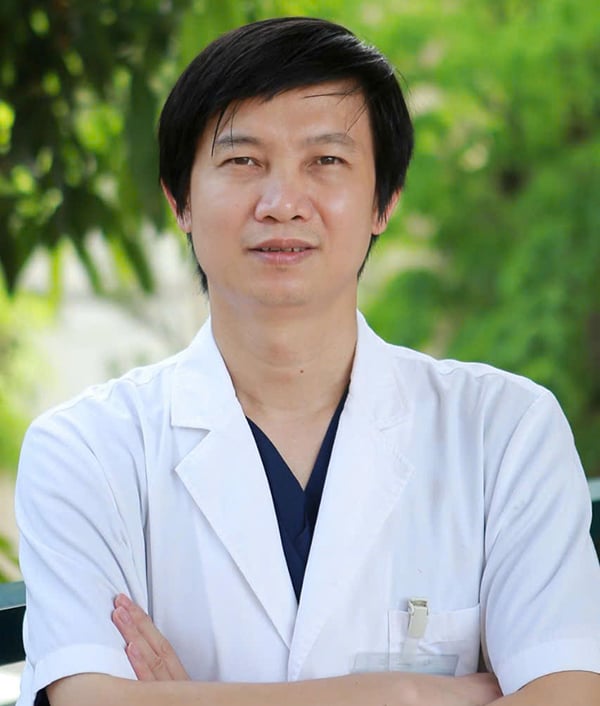


![[Photo] Prime Minister Pham Minh Chinh chairs conference on anti-smuggling, trade fraud, and counterfeit goods](https://vphoto.vietnam.vn/thumb/1200x675/vietnam/resource/IMAGE/2025/5/14/6cd67667e99e4248b7d4f587fd21e37c)




















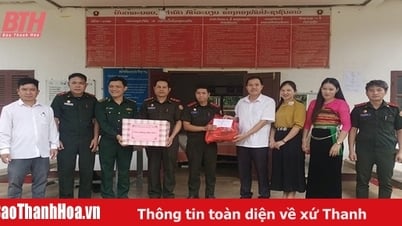

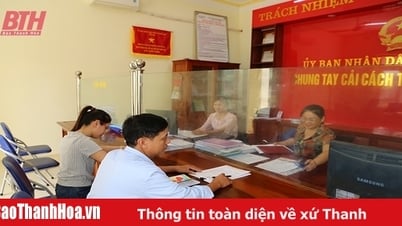
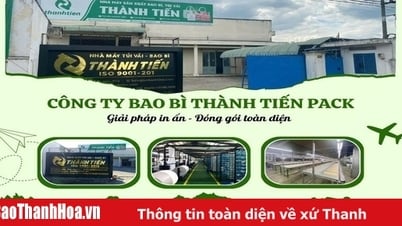























































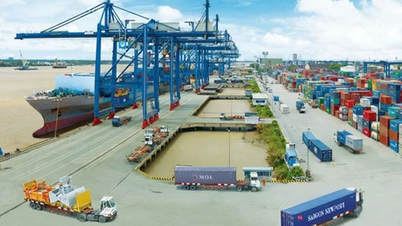











Comment (0)